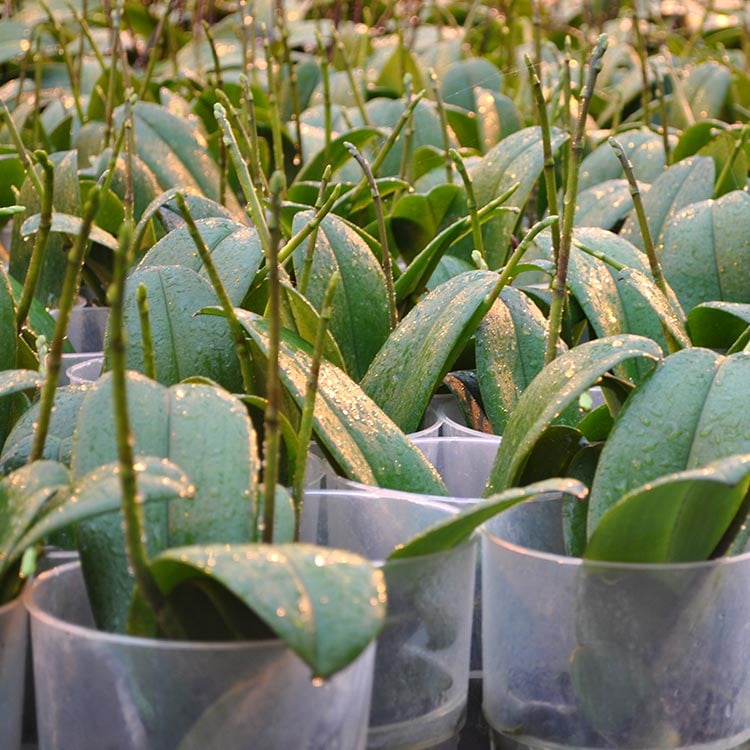The quality and condition of a Phalaenopsis orchid’s leaves can provide valuable clues to the plant’s general health. Learning to recognize signs of orchid distress and understand the meaning behind the appearance of your plant’s leaves can help you spot potential problems and address them before they damage your orchid.
Here’s how to decipher the hidden message in orchid leaves:
- New leaves that grow in smaller than previous leaves indicate that your orchid is under stress and unable to devote adequate energy to leaf development. Check light and temperature levels first. Extreme temperatures or inadequate light can impair leaf growth. You may need to move your plant closer to a window. You should also inspect your orchid’s potting media and root system to see if your orchid needs to be repotted.
- If your orchid fails to develop new leaves, it may be suffering from a phosphorous or nitrogen deficiency. Increase fertilizer applications to every other week.
- Limp or dull leaves that eventually wrinkle are signs of dehydration. Increase watering and inspect your orchid’s root system for signs of stress. Repot your orchid if the root system does not look healthy.
- If the tops of orchid leaves turn reddish (reddish undersides are often normal), your orchid may be suffering from sunburn or a nitrogen or phosphorus deficiency. Move your orchid away from direct sunlight and apply fertilizer.
- A fungus may be present if new foliage bears a reddish tint. Treat with fungicide.
Check our orchid care library for more information about growing healthy orchids.

